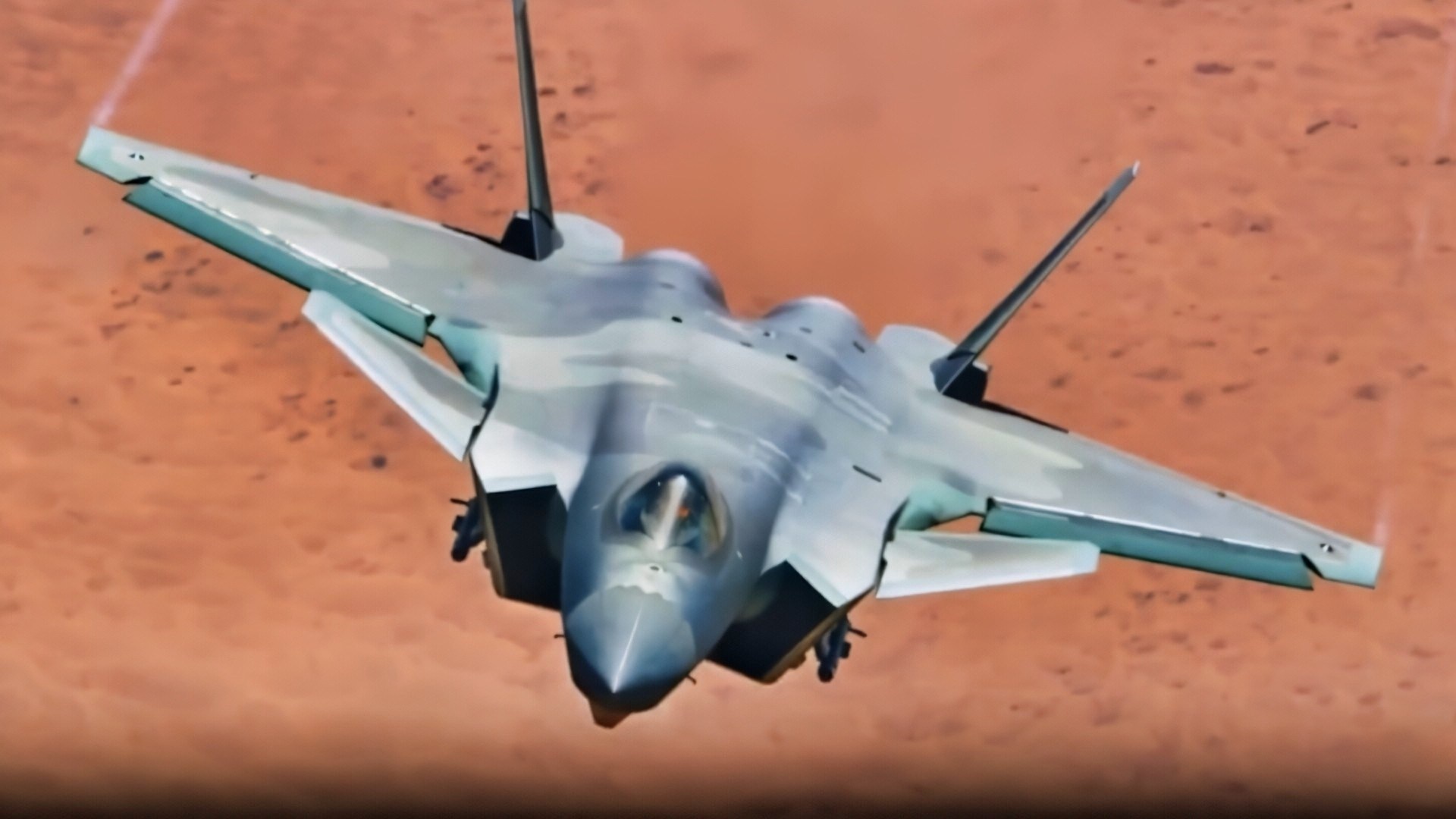Key Points and Summary – China’s J-20, known as the “Mighty Dragon,” is a formidable stealth fighter, likely developed using technology from the U.S. and Russia.
-While its true combat effectiveness is unproven, the jet boasts impressive on-paper specs, including supercruise and long range.
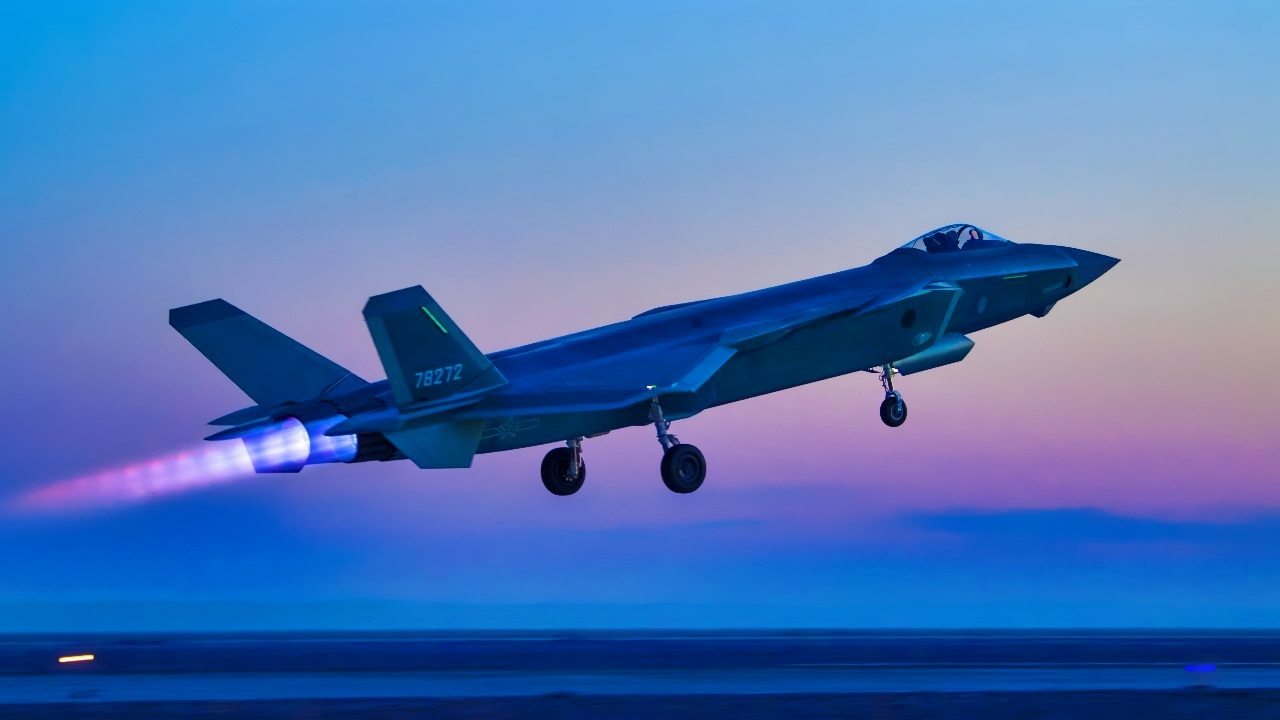
China J-20 Amazing Colors. Image Credit: PLAAF.
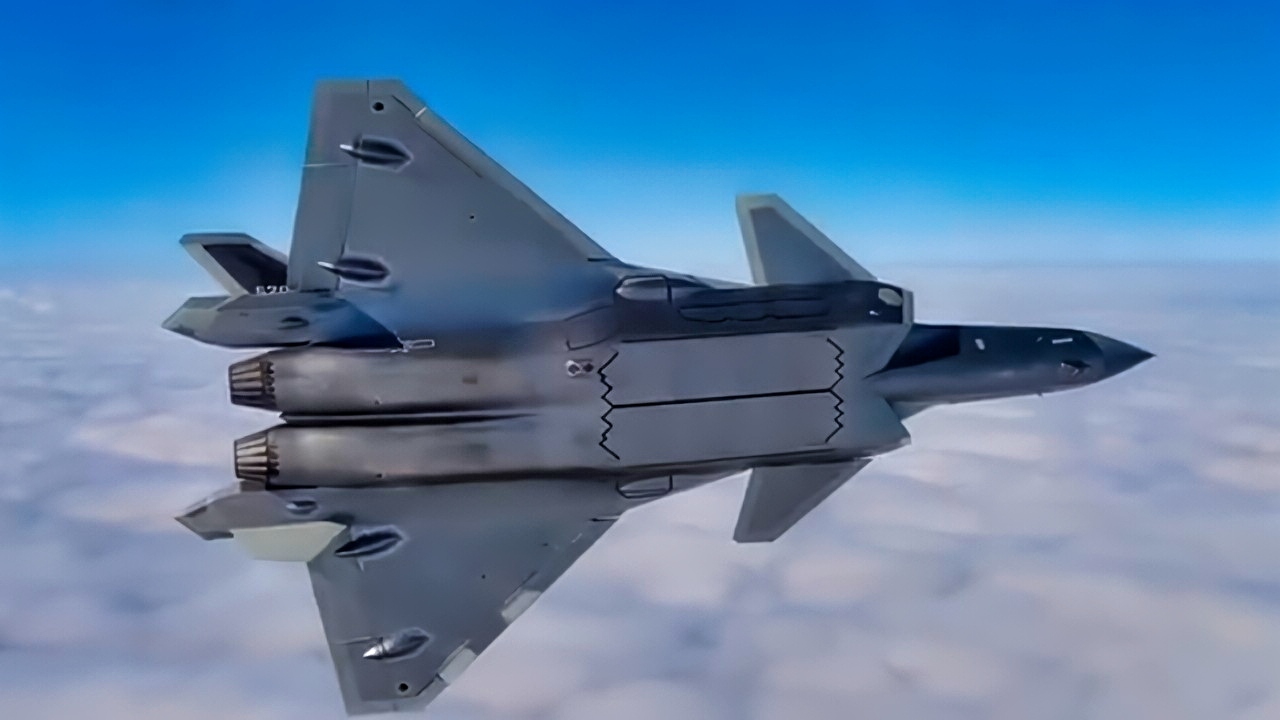
China J-20 Screenshot. CCTV Screenshot from State TV.
-A Chinese pilot recently claimed to have overflown Taiwan undetected.
-Though U.S. commanders state they are not losing sleep over the J-20, they are impressed by its command and control.
-The primary threat posed by the J-20 is not necessarily its quality, but the sheer quantity China can produce, creating a serious challenge in a potential Taiwan conflict.
China’s J-20 Stealth Fighter, A Formidable Foe
The Chinese built the first stealth fighter aircraft outside of the United States. The J-20 “Mighty Dragon” stealth fighter is the real deal and even earned grudging respect from American F-35 pilots during what American pilots deemed a “professional” encounter over the East China Sea.
China didn’t have a stealth fighter program until 2007. But how did they come so far, so fast? The Chinese government has a massive espionage arm. The Chinese think nothing of stealing from friends and foes alike, and they consider it normal to steal secrets from competitors.
A look at the Chinese military aircraft from the past 20 years or so, and it looks like you are looking at American or Russian aircraft. And in many cases… You are.
China’s Stolen Stealth Program Secrets and the J-20:
China’s J-20 stealth fighter was unveiled in 2011, but the date to remember is 2007, when the program was initiated. Before 2007, the Chinese had no stealth aircraft program. But in 2007, Chinese hackers broke into the secret files of the U.S.’ Joint Strike Fighter project and stole data related to the F-35 stealth fighter.
Just four years later, Beijing unveiled its J-20, which features several design breakthroughs similar to those found on the F-35. Those same experts believe this sudden technological leap could not have happened without data that had been hacked from the U.S.
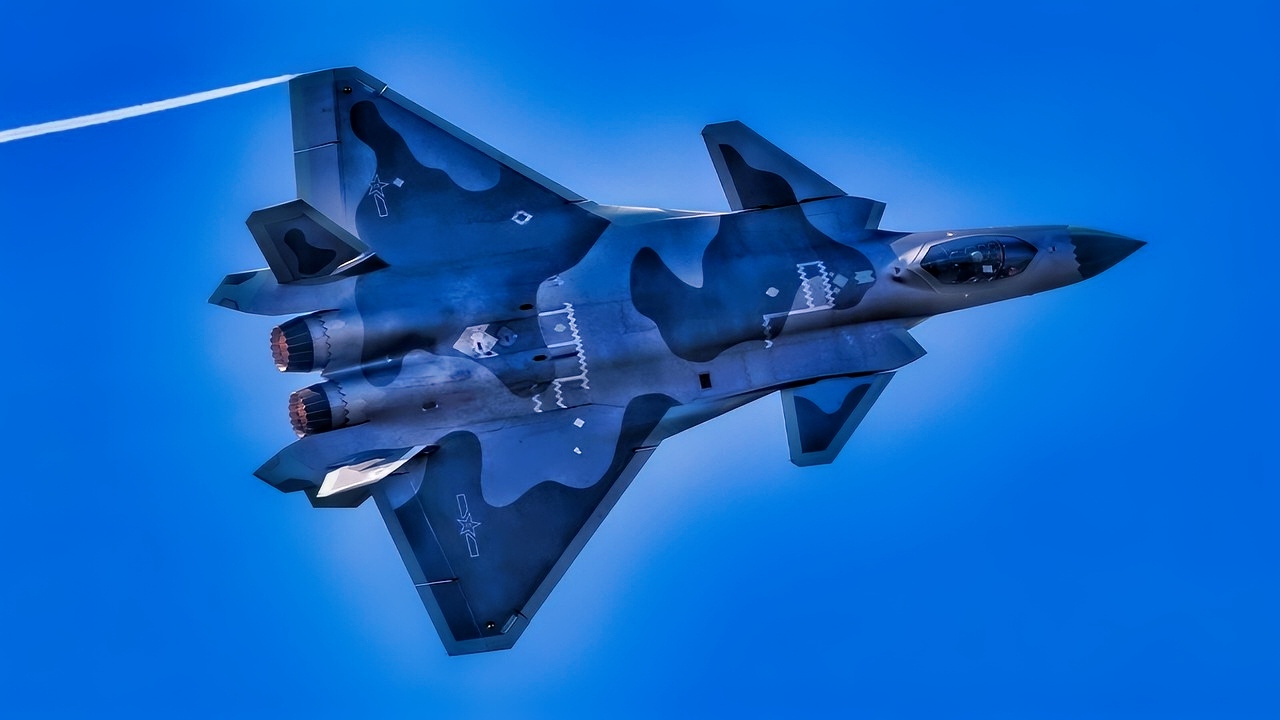
J-20 Fighter In New Paint Scheme. Image Credit: Creative Commons.

J-20 Mighty Dragon in Camo Back in 2018. Image Credit: Chinese Air Force.
China’s Chengdu J-20 stealth fighter likely incorporates stolen technology from at least three sources: Russia’s MiG-1.44, America’s F-22 Raptor, and F-35 Joint Strike Fighter.
While its overall design closely mirrors Russia’s abandoned MiG-1.44, critical stealth elements seem to be borrowed from Lockheed Martin’s fighters—blueprints that China gained through espionage.
China’s J-20 predecessor, the J-10, is directly based on intelligence purchased by China from Israel in the 1980s for the defunct Lavi fighter, which was based on America’s F-16.
Once again, it is strikingly similar to the F-16.
Meet The J-20 Mighty Dragon:
Like other stealth fighters, the J-20 stores its weapons in a storage bay. It has four beyond-visual-range (BVR) and within-visual-range (WVR) missiles. With internal fuel tanks, the J-20 can travel 1,100 nautical miles.
The J-20’s speed tops out at Mach 2.55 (1956 mph) according to the Chinese. It is capable of supercruise, flying supersonic without using fuel-intensive afterburners.
The J-20 has a high ceiling and can reportedly reach 65,000 feet. China has indigenously produced the Shenyang WS-10 afterburning engine, which provides 30,000 pounds of thrust that now powers the J-20.
Recently, a J-20 pilot of the People’s Liberation Army Air Force (PLAAF), Captain Yang Jucheng of the “Wang Hai” Brigade, claimed that he overflew the entire island of Taiwan and was never once intercepted.
He reportedly penetrated Taiwan’s airspace, and Taiwan’s air defense systems were utterly unaware that the aircraft was even there.
Would The J-20 Be A Gamechanger In A Pacific War?
No one really knows how China’s J-20 will perform. It’s one thing to steal designs from three different aircraft to make one. But it is another thing to make it work. One question is just how good the quality of its components and construction is?

J-20. Image Credit: Creative Commons.
Thus far, the most concerning aspect of the J-20 is its numbers. Even if US fighters are technically superior, having numbers far in excess of those of US and Allied fighters is concerning.
Another question about the J-20 is whether its internal make-up is known, and whether it has the same data-link capabilities as the F-35.
These secure data links give the F-35 the ability to combine sensors on multiple other F-35s and other U.S. sensor platforms to give U.S. pilots an unprecedented view of what’s happening in the air battleground and work together to prioritize targets effectively.
One way they could swing the battles is by using long-range missiles in air-to-air combat. The J-20 could be used to punch through opposing air defenses by engaging and destroying enemy fighter patrols, AWACS/AEW&C aircraft, and refueling tankers.
When used as a ground attack platform, the J-20’s large bomb bays and ability to carry long-range air-to-ground and anti-ship missiles could enable it to strike targets far behind enemy lines.
This could be Taiwan, the Philippines, Guam, Japan, or South Korea.
This would give China the ability to disrupt enemy supply lines, attack air bases, and threaten US Navy surface assets.
The J-20’s long-range capability also allows it to engage targets beyond the reach of other air-to-ground platforms.
US Not Losing Sleep Over the J-20
Gen. Kenneth Wilsbach, then-head of Pacific Air Forces, a few years ago said, “It’s not anything to lose a lot of sleep over,” while speaking to the media about the J-20. “Certainly, we’re watching them closely and seeing how they felt and how they operate them.”
Wilsbach added that after “some recent close engagements we had with our 5th gen jets and some of their J-20s” in the Pacific region, the Air Force had “learned a lot from that,” but that “it is nothing frankly that I would worry too much about.”
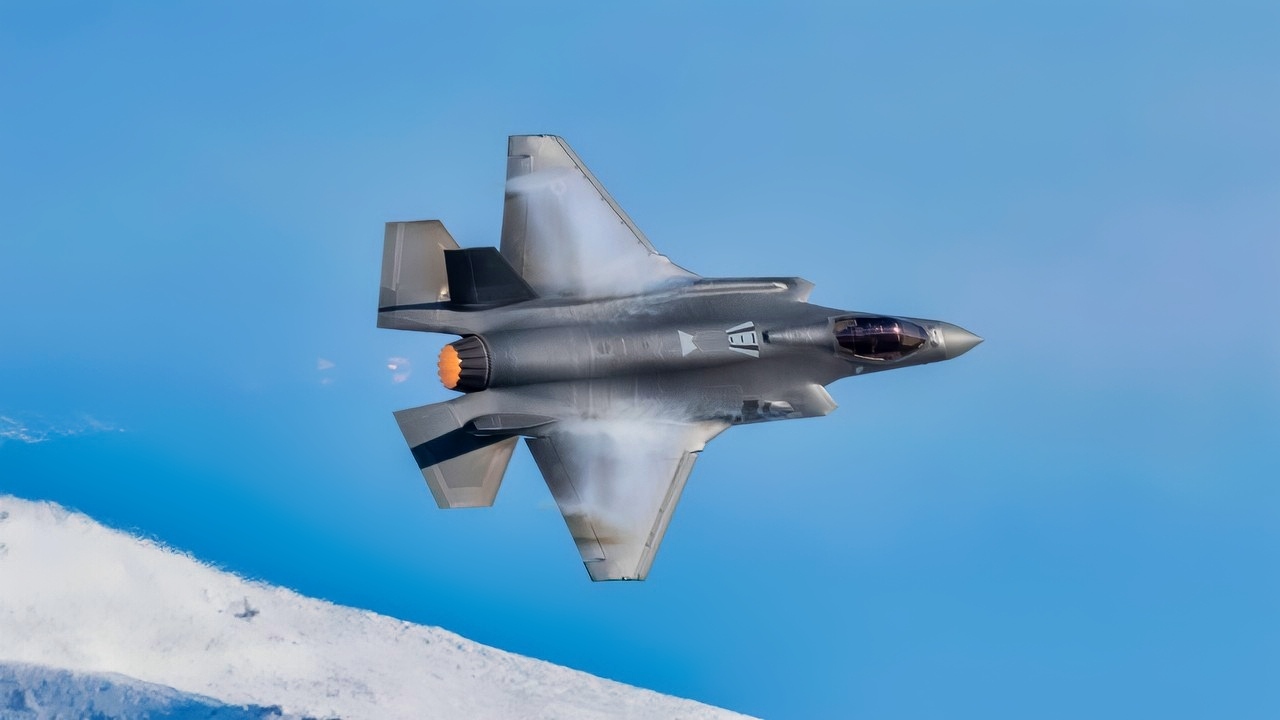
Maj. Kristin “BEO” Wolfe demonstrates the capabilities of the F-35A Lighting II, a single seat, single engine, all-weather stealth multirole fighter aircraft, during a practice flight with the F-35 Demonstration Team at Hill Air Force Base, Utah, Dec. 13, 2023. (U.S. Air Force photo by Senior Airman Jack Rodgers)
Wilsbach gave some interesting perspectives on the meeting, coupled with respect. “We’re relatively impressed with the command and control associated with the J-20.”
The J-20’s capabilities could significantly impact a hypothetical war in the Pacific, shifting the balance of power in favor of China.
However, the outcome of any war would still depend on a multitude of factors, including the overall strategic situation, the tactics employed by both sides, and the effectiveness of their respective air defenses, and most importantly, the training and skill of their pilots.
J-20 In 4 Words: Helps China Invade Taiwan?
Recent intelligence estimates believe the Chinese will invade Taiwan by 2027. It would probably be sooner if they planned to take the island by force, but that is just speculation. They’d rather it be done bloodlessly so that they can take over Taiwan’s massive semiconductor industry intact.
Everyone is well familiar with China’s recent AI breakthrough with DeepSeek. TSMC, a Taiwanese semiconductor firm, produces nearly 90% of the world’s most advanced chips for AI and quantum computing applications. They’re the firm behind all of Apple’s custom chips and supply CPUs and GPUs for Apple, Nvidia, Qualcomm, and more. And China wants it.
However, if China does invade, 200-300 J-20s over the skies of Taiwan would be a formidable foe.
About the Author: Steve Balestrieri
Steve Balestrieri is a National Security Columnist. He served as a US Army Special Forces NCO and Warrant Officer. In addition to writing on defense, he covers the NFL for PatsFans.com and is a member of the Pro Football Writers of America (PFWA). His work was regularly featured in many military publications.
More Military
The U.S. Army’s Big M10 Booker ‘Light Tank’ Mistake Still Stings
The U.S. Navy Built Two Versions of the Littoral Combat Ship. Both Were a Mess.
The EA-18G Growler Has A Message for the U.S. Navy
Warship Goes Down Below the Waves: Navy F/A-18F Fighter Fires A Stealth Munition


